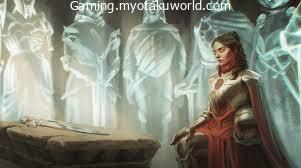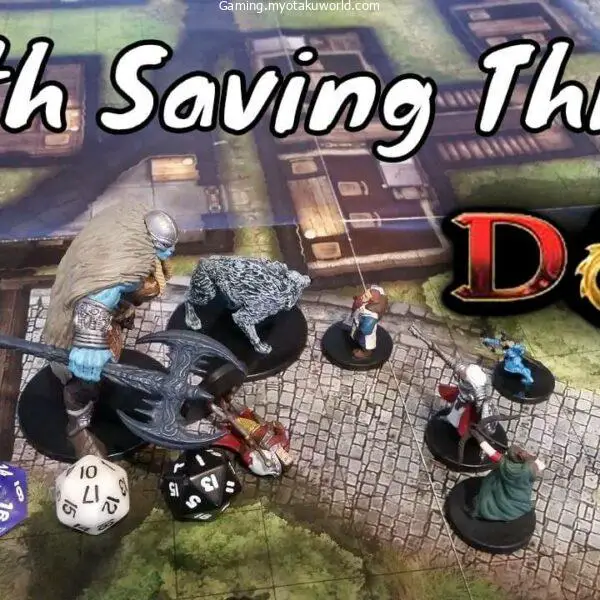The cabin of the Acererak’s follower is hidden in the quiet forest. Your group has been following his scent for days, and you’re almost there.
The air smells like burned wood and rotting bodies. In the distance, you can see the light of the skull on fire and hear him laugh at you. Your group gets ready for battle by getting weapons out and spells ready.
The skull suddenly spins around and summons a burning bone ball that moves between you and your allies.
You all jump back and try to avoid the burning threat, but the skull moves it back and forth, chasing you. You try to attack the floating head, but the servant of Acererak blocks your way with his zombie minions.
As it hits you and sets everything on fire, the fireball starts to burn the whole forest. The skull’s laugh and the crackling of wood are the last sounds you hear before the area around you starts to burn.
Welcome to a guide to Flaming Sphere 5e.
- Is Flaming Sphere a Good Spell?
- What is “Flaming Sphere?”
- WHO CAN CAST FLAMING SPHERE IN 5E?
- Breaking Down the Spell’s Characteristics
- Breaking Down the Spell’s Effect
- It’s an Object
- Damage Instances
- No Line of Sight
- Dexterity Saving Throw
- Damage
- WHAT DOES FLAMING SPHERE DO IN 5E?
- Who Can Conjure a Flaming Sphere?
- Final Words
- FLAMING SPHERE 5E COMPARED TO FIREBALL
- FAQs
Is Flaming Sphere a Good Spell?
Flaming Sphere is a powerful spell for summoning things if it is used right. If you’re new to the game and especially if you don’t like the strategic part of combat, I wouldn’t recommend it.
Instead, I’ll choose options that are easier to understand, some of which are talked about later in the article.
Still, the spell is fun and fits the theme. This spell is a lot of fun for players who have played before.
What is “Flaming Sphere?”

As stated in the PHB (Player’s Handbook), Flaming Sphere is a 2nd level conjuration spell. The casting time is one action, the range is 60 feet (5 ft sphere), and the duration is up to 1 minute with concentration. The Components are Verbal, Somatic, and Material. The effect reads as follows:
“A 5-foot-diameter sphere of fire appears in an unoccupied space of your choice within range and lasts for the duration. Any creature that ends its turn within 5 feet of the sphere must make a Dexterity saving throw. The creature takes 2d6 fire damage on a failed save, or half as much damage on a successful one.
As a bonus action, you can move the sphere up to 30 feet. If you ram the sphere into a creature, that creature must make the saving throw against the sphere’s damage, and the sphere stops moving this turn.
When you move the sphere, you can direct it over barriers up to 5 feet tall and jump it across pits up to 10 feet wide. The sphere ignites flammable objects not being worn or carried, and it sheds bright light in a 20-foot radius and dim light for an additional 20 feet.”
The spell’s damage increases by 1d6 for every spell slot above the second.
WHO CAN CAST FLAMING SPHERE IN 5E?
The following classes have Flaming Sphere on their spell list:
The following subclasses get Flaming Sphere for free:
- Cleric (Light Domain)
- Druid (Circle of Wildfire) (TCoE 40)
- Warlock (The Celestial) (XGtE 54)
- Artificer (Alchemist) (TCoE 14)
Breaking Down the Spell’s Characteristics
Flaming Sphere is a 2nd level spell, which means that full casters will be able to use it early on in the game. It has to compete with spells like Heat Metal, Hold Person, Phantasmal Force, Shatter, Spiritual Weapon, and so on.
These spells are the next step up from first-level spells. They have local effects that last longer than first-level spells, but not as long as third-level spells, which can blow up whole buildings.
It is a spell to call up something. The magic of this school tends to bring something permanent to the battlefield. In some situations, it’s almost like adding a new player.
As always, the magic school doesn’t change how the game works, but it does show us what the game designer had in mind. In this case, the energy ball is a real object that moves around the battlefield.
The time it takes to cast an action is usually the same. Still, it’s important to keep in mind when we think about the spell’s damage. It will only do damage the turn you cast it if you also use your bonus action to ram it. If not, the sphere doesn’t do anything the turn you make it, which is important if you need your bonus action for something else.
The range of 60 feet is useful, and most of the time, it will be enough to cover an entire room. But in the same turn you cast it, you can move it 30 feet. This means it has an effective range of 90 feet and gets better each turn.
It also has a 5 ft diameter, which means it takes up the whole space of another creature in a grid. It’s important to remember that the ball of fire is real and not just a ball of intense heat. Since it takes up space, you could use it to block a 5-foot-wide path.
It lasts long enough to last an entire fight, but keep in mind that it takes concentration. A smart enemy knows when to hit spellcasters to stop an effect that keeps going.
If you don’t deal with Flaming Sphere quickly, it can do a lot of damage. So, the spell has a good range at first, but you can control it from anywhere, so keep running and moving the sphere while you do.
The usual parts are in Flaming Sphere. These are its limits, because the person who casts the spell needs to be very free to do so. Most of the time, these restrictions won’t matter, but if they do, you’d better have a plan B.
Breaking Down the Spell’s Effect
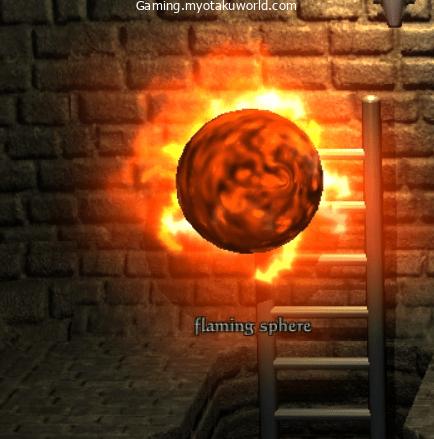
Flaming Sphere has a long description, similar to a spell that conjures things. When you add something physical to the battlefield, it’s a good idea to write down all the rules for it. Still, the spell leaves out a few things, and it would be good to explain them.
It’s an Object
First of all, I already said that the spell makes an object that stays on the battlefield and acts like any other object.
There are a lot of these, but here are some: The sphere can give half cover and block the way, but it is small or medium and can pass through a huge or gargantuan creature.
The spell, however, says that the sphere must be made in an empty space, so it can’t be made around a poor gnome.
Damage Instances
The spell then does two kinds of damage:
- If a creature ends its turn 5 feet from the sphere, it gets a bonus. If a creature moves into the sphere’s range and doesn’t make an “attack of opportunity,” the sphere doesn’t do any damage. Because of this, a smart creature that can move can probably always avoid this damage. So, the spell is really good if a creature can’t move or has to stay in one place for some reason.
- When you use a bonus action to hit a creature. This damage is probably the one that can be counted on more. In this case, Flaming Sphere is very similar to Spiritual Weapon, which is one of the best 2nd-level spells in the game. I love making my bonus actions into weapons that do more damage.
No Line of Sight
The fact that it says “an unoccupied space within range” is a cool thing about the spell. It doesn’t say which way to look. I once read about someone who made a flaming sphere outside of their house and moved it around without knowing what it was hitting.
When I use this with Arcane Eye, I can scout the dungeon ahead of time and then kill every hostile creature without them knowing where I am. Don’t do this if you don’t want to hurt anything.
Dexterity Saving Throw
You must make a save or take half damage from the spell. Most spells that use fire work like this. Both pros and cons are clear. The pro is that they will always take damage unless the enemy has Evasion.
The downside is that most creatures have high dexterity, which means that, depending on the DC, most creatures can pass the save.
Damage
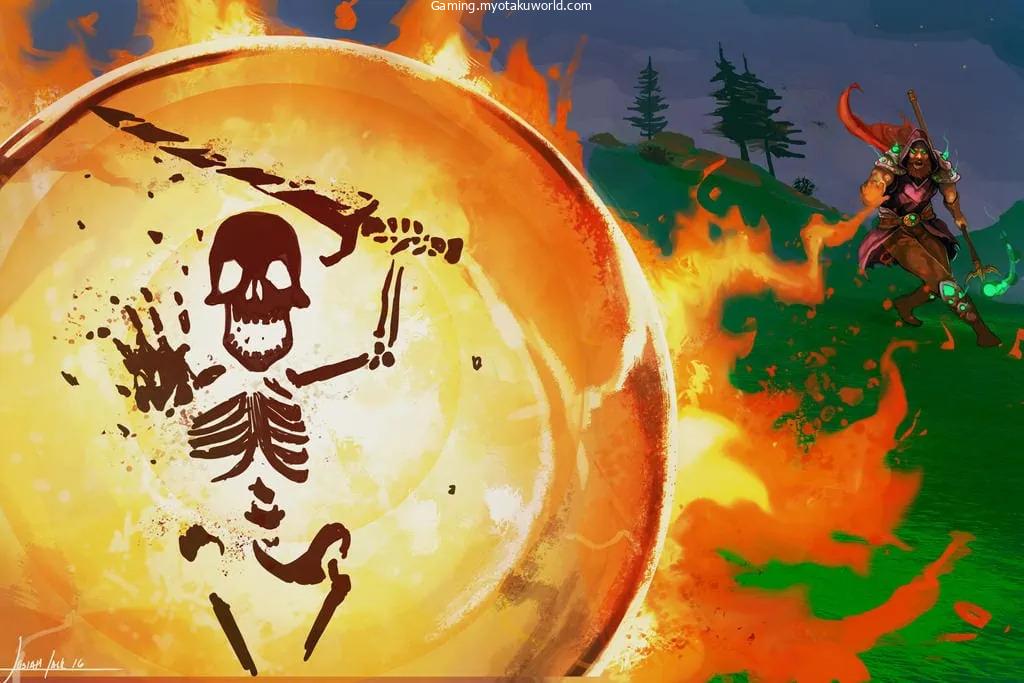
There are many things that can change how much damage the spell does. The spell gets stronger the longer the fight goes on and the better your enemies think the sphere is placed. So, there are two things to know about damage:
- The damage is 2d6 by default. This is bad on its own. At level 5, a cantrip can do better. But this spell is much harder to do than most. For example, the second-level spell “Shatter” has a larger area of effect, more damage, and a better type of damage. But you can do much better at Flaming Sphere if you play it strategically.
- The type of damage is fire, which is the second most difficult to avoid in the game. This is definitely a bad thing, but how bad it is depends a lot on the campaign. This spell is useless if you want to go to the Abyss. If you want to fight a Green Dragon and his nature-based minions, though, you should pack it. So, this is a little bit of a bad thing.
The Moving Area of Effect
The spell points to a 5-foot area. The actual area of effect, though, is a 15-foot cube because the damage is done near the sphere, not where it is. Even though this area is small, you can move it around, which makes it a lot more useful than Burning Hands or Ice Knife.
The Sphere’s Physical Interaction
If we compare this spell to something like “Spiritual Weapon,” you can see what happens when you add details. Both spells make an object appear in a space that is already being used.
The object can be moved 30 feet to attack an enemy. But Spiritual Weapon doesn’t say anything about how it moves. So does Flaming Sphere.
It is stuck to the ground and has to jump over things to move. Among other things, you can’t throw the spell at enemies that are flying.
Ignition of Flammable Objects
When a fire-based spell says that it starts fires in flammable things, it can do a lot more than that. Depending on the setting, there may be a lot of wooden buildings, and plants can be very easy to set on fire.
Keeping this in mind, a simple second-level spell could start a wildfire if you’re not careful… or don’t want to be.
Lighting
You can move the sphere of magical light around. So, the spell not only gives you light, but, depending on how dark it is, it could also show you things that a normal torch wouldn’t. Still, keep in mind that it’s not really sneaky to have a big glowing ball.
WHAT DOES FLAMING SPHERE DO IN 5E?
With sufficient concentration, Flaming Sphere can generate a fireball with a diameter of up to five feet that burns for up to one minute in a room that is otherwise empty.
If a creature’s Dexterity saving throw fails and it ends its turn within 5 feet of the sphere, it takes 2d6 (7 average) fire damage. This damage is reduced by half if the creature succeeds in its save.
As illustrated below, the area of effect damage caused by Flaming Sphere affects a total of 9 squares, assuming that 5 square feet constitutes one square:
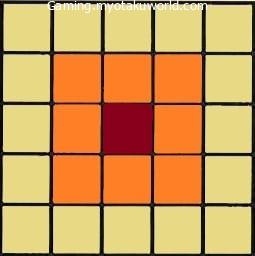
If a creature is standing on any of the nine squares at the end of its turn, it must make a saving throw against fire damage using its dexterity or take the damage instead. The red square represents the square that is currently being occupied by the Flaming Sphere.
In addition, as an additional action, you have the ability to move the sphere up to a distance of 30 feet. If the sphere collides with a living creature, the creature receives the same opportunity to make a saving throw against the damage that the sphere deals, and the sphere is unable to move for the remainder of this turn. While Flaming Sphere is still active, you have the ability to do this on each and every one of your turns.
The sphere is able to move over obstacles that are up to five feet in height and can leap across chasms that are up to ten feet wide. In addition to this, it can set fire to combustible items that are not being worn or carried, and it emits bright light within a 20-foot radius and dim light beyond that for an additional 20 feet.
Who Can Conjure a Flaming Sphere?

Character Options
First of all, Flaming Sphere is a second-level spell on the lists of spells for both Wizards and Druids. It’s important to remember that the two D&D classes have different ways to prepare spells.
A Wizard might be able to use spells that are better for the group, but a Druid can change his or her spells every day. Since TCoE came out, the spell is also on the list of optional rules for Sorcerers.
So, this spell can be used in different ways by four subclasses. This spell is always ready for the Light Domain Clerics, Alchemists, Artificers, and Circle of the Wildfire Druids, which means they can use it every day.
On the other hand, it is added to the list of spells that the Celestial Warlock can choose from when they level up.
At level 10, the Bard also gets the Magical Secrets ability, which lets them choose any spell from any class. This is most likely best used to choose a spell with a higher level.
Still, a College of Lore Bard can make this choice at level 6, which lets them get lower-level spells with less of a chance of being wasted.
DM Options
Now, DMs should know that only Flaming Skulls and Hags in a Coven of Nature have the spell “Flaming Sphere” on their spell lists.
Even though there aren’t many monsters that can cast this spell, DMs can change any monster’s list of spells if they think it’s best. So, it’s good to know what kind of fantasy this spell is usually used for so that it fits with a monster’s theme.
This spell can be used in two different ways. The crazy wizard (Flaming Skull) and the force of nature (Hags of Nature). I like to think of the first one as a wacky scientist or magician who tries to control fire, which is inherently chaotic.
The other one is something that happens in nature. Even though wildfires are bad in the real world, they can be a normal response. Some pine trees have changed so that when they are burned, their seeds pop out. With a Flaming Sphere, a creature can start a needed wildfire in a dead forest.
Final Words
OK! Now that we’ve looked at every aspect of this spell, let’s put it all together and answer the question: Should I choose this spell?
Is it better than the other choices?
Does it match who I am?
You can answer that question from two points of view: The mechanics and the magic.
Mechanical Aspect
Flaming Sphere is a very hard spell, as we’ve seen. For a second-level spell, it has a lot going on. Damage that happens more than once, action economy, single target, area of effect (AoE) damage, etc.
Keeping this in mind, this spell may at first seem to do the same thing as its older brother, “Fireball.” But this is not a spell that does damage. Instead, it is a spell that controls the Battlefield.
The spell is a big ball of fire that moves around and burns enemies. It does a lot of damage. Still, its main goal is to make a threat on the battlefield that the enemy always has to think about.
It’s not just about blowing up enemies in a round. It forces them to choose between the better spot and the one where they won’t get burned.
This video talks about a funny but deadly combination at early levels:
The short version is that combining this spell with something that freezes an enemy in place, like an ally with the Sentinel ability, does a lot of damage.
The spell isn’t as powerful as something like Scorching Ray because it doesn’t simply kill enemies. When you put down a flaming sphere, the battlefield changes, the threat stays the same, and the damage that could be done keeps growing.
Also, spells that do 1d6 damage tend to scale poorly, but the Flaming Sphere’s two damage instances make it scale well.
In short, the spell is as good as the conditions you can create for it to work. Using it well is the key. It’s not worth doing if it only does 2d6 damage. You need to think about it and use it early on in the fight.
Fantasy Aspect
The next question is often forgotten, but it’s important if you want to have a good time gaming. What idea, concept, or image does this spell try to fulfil? Also, I want to know if this spell fits my character.
When I look at Flaming Sphere, I think of a burning tumbleweed, a ball of fire that is being fed by something that looks like a plant. I think of Moses’ burning bush or of the dwarfs in The Hobbit throwing down burning pinecones.
I see wild, out of control fire moving around and scaring my enemies to death. The spell is funnier the better the DM can describe how the enemies look when they are scared.
As with all spells, I tend to describe them based on where my character’s magic comes from.
For example, Suppose you’re an Alchemist Artificer. In that case, the Flaming Sphere could be a blazing red ooze-like creature, like the Pokemon Muk, but made of lava; if you’re a Bard and learn this spell from magical secrets, you can make a string of bubbles with your flute that explode when they touch an enemy and move in strange patterns through the ground; if you’re a Dwarf Sorcerer, you can be like Mako from Korra and move around a ball of
I think this post will help you love this spell as much as I do. Play with fire if you want to. I give you my blessing with a fiery feeling.
FLAMING SPHERE 5E COMPARED TO FIREBALL
Flaming Sphere is a spell available to Wizards of level 3, but Fireball won’t be unlocked for them for another two levels, so they may wonder if it’s better to skip it and go straight to Fireball. Flaming Sphere is not rendered completely useless by the fact that Fireball is the most effective area-of-effect (AoE) blasting spell for a significant portion of a campaign.
To begin, Flaming Sphere has a duration of one minute and can be used to control the battlefield, force enemies into difficult decisions, and make safe attacks from around corners. This ability also has a cooldown of one minute. Not to mention the fact that Flaming Sphere is capable of easily dealing more overall damage than Fireball if it is used for its full duration against foes that are unable to move.
Having said that, the massive area of effect, range, and initial damage that Fireball deals are still appealing features. Fireball is the superior option when it comes to dealing damage in a straightforward manner. Flaming Sphere is the better choice if you’re looking for more nuance and control.
Due to the fact that they are both fire spells that require Dexterity saves, picking both is not the best option. Unless, of course, you’re going for a fully themed fire mage, in which case it’s a fantastic idea.
FAQs
Can you interact with Flaming Sphere 5e?
The spell’s description doesn’t say how to interact with the flaming sphere besides being moved by the caster in certain ways. With this in mind, the spell relies on common sense in how you interact with it. CAN YOU PUSH A BALL OF FIRE, THEN GO BACK TO PREVENT DAMAGE AT THE END OF THE TURN? Yes, the rules are written down, but it doesn’t make sense that you don’t take any damage.
Can you destroy a flaming sphere 5e?
A MAGICAL EFFECT CAN ONLY BE RUINED BY ANOTHER MAGICAL EFFECT. You could technically throw a burning ball into water and it would still work (HALVED DAMAGE). As a general rule, any higher-level spell should be able to put out a lower-level fire. For example, FLAMING SPHERE COULD PASS THROW A WATER WALL IN THE SHAPE OF A WATER CANTRIP, but not a TSUNAMI SPELL.
Does darkness dispel flaming sphere?
YES, FLAMING SPHERE SHOULD GET COMPLETELY COUNTERED BY DARKNESS. As it says in the DARKNESS SPELL, “IF ANY OF THIS SPELL’S AREA OVERLAPS WITH AN AREA OF LIGHT CREATED BY A SPELL OF 2ND LEVEL OR LOWER, THE SPELL THAT CREATED THE LIGHT IS DISPELLED.” This means that if the darkness touches the 40-foot-dim light of the FLAMING SPHERE, the spell that created the light is dispelled.
Does flaming sphere fall down alone?
Rules-wise, the only way the Flaming Sphere can move is if the Caster uses its Bonus Action. But the fact that it can only jump so high suggests that gravity has an effect on it. So, I’d say that if the sphere is in a place where it will fall unless the caster moves it the other way, it will fall at the rate set by the rules for falling.




